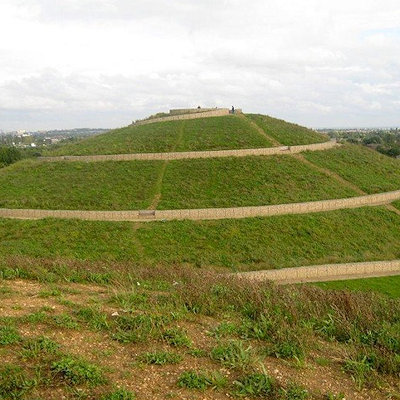
Like us on Facebook
PLACE NAMES


 
|
|
Northolt
|

|
|
|
The settlement of Northolt is located in the ancient county of Middlesex (now part of Greater London) and is mentioned in the Domesday Book as being held by Geoffrey de Mandeville, and archaeological evidence suggests that there was a Saxon village at the location from the 8th century onwards. The medieval village had its origins in the Saxon period. Up to late Victorian times, the area was rural with predominantly arable crops being grown. The fourteenth century Northolt Manor existed behind the present Court Farm Road and was excavated from 1950 onwards. A barn constructed in the area in 1595 can now be seen in the Chiltern Open Air Museum. In the early part of the 18th century farmland was enclosed in order to provide hay for the City of London, alongside more traditional crops such as peas and beans.
Suburban development began in the 1920s. Most of the housing north of the Western Avenue was built in the 1920s–1930s, and is in the private housing sector. Most of the housing built to the south of the Western Avenue was built in the 1960s–1970s, and is in the social housing sectors, particularly along the Kensington and Ruislip Roads.
Two important transport links run through Northolt: the Grand Union Canal and the modern A40 road.
In the 21st century, a new large private housing development was built on the former site of the Taylor Woodrow company, adjacent to the Grand Union Canal. This development is known as "Grand Union Village" and incorporates a new canal boat marina.
The Royal Air Force has a station near Northolt. Sometimes called Northolt Aerodrome, it is situated in the neighbouring town of South Ruislip in the London Borough of Hillingdon. Most early RAF airfields were named after the nearest railway station; in this case Northolt Junction, (now South Ruislip).
Local landmarks include:
- Farrier Road apartments, part of Smith's Farm estate, at the bank of the Grand Union Canal.
- St Mary the Virgin church (14th century) stands on the hill overlooking the old village. The Welsh poet Goronwy Owen was briefly a curate here. Bishop Samuel Lisle is buried here.
- In the centre of the village is a freestanding clock tower erected to commemorate the coronation of George VI in 1937.
- The White Hart public house is on the site of an old coaching inn. The roundabout immediately south of it is on the junction of the A312 (Church Road and Hayes Bypass) with the A4180 (Ruislip Road and West End Road). The Yeading Lane also joins the roundabout.
- Willow Cottages on the village green are said to have been built of bricks from the old manor house, which once stood behind the parish church.
- The two towers of the disused RAF radio station north of the town are situated in the Wood End wireless station recreation ground, which is bordered on all sides by housing (Bayshill Rise, Lancaster Road, Blenheim road). The location is now home to a National Air Traffic Control base.
- Northala Fields is a large area alongside the A40 road which has been redeveloped as an extension to the Northolt and Greenford Country Park. The development consists of four large, man-made conical hills (built of rubble from the first Wembley Stadium), which act as a sound barrier to block traffic noise from the Western Avenue. Behind the mounds are new ponds and a visitor centre.
- The Larkspur Rovers F.C. clubhouse is in Rowdell Road, Northolt. It received funding from Ealing Council and an Olympic legacy grant from Sport England's Inspired Facilities Fund.
- There is a village community centre building in Ealing Road, opposite St Mary's church, which incorporates an open-air miniature railway.
- A leisure centre, incorporating a pool, a fitness centre, a community hall and a library was built on the site of the former Swimarama swimming pool at the junction of Mandeville Road and Eastcote Lane North, and opened in 2010.
- Down Barns Moated Site, a Scheduled Ancient Monument.
Northolt was famous for the pony racing which took place in Northolt Park. A one and a half mile (2.4 km) racecourse was constructed by Sir William Bass and Viscount Lascelles, and opened in 1929 by the Earl of Harewood and his wife the Princess Royal. During World War II the land was taken over and used as an army depot and prisoner of war camp. Despite numerous attempts to revive pony racing after the war the land was given over to housing construction. The Racecourse Estate was constructed between 1951 and 1955 in order to solve a severe housing shortage within the borough. The gates of the original racecourse remain in Petts Hill, and a section of the track can be observed as a long, flat stretch of land alongside Mandeville Road.
|
 Feel free to Email me any additions or corrections Feel free to Email me any additions or corrections
LINKS AVAILABLE TO YOUR SITE
| |





